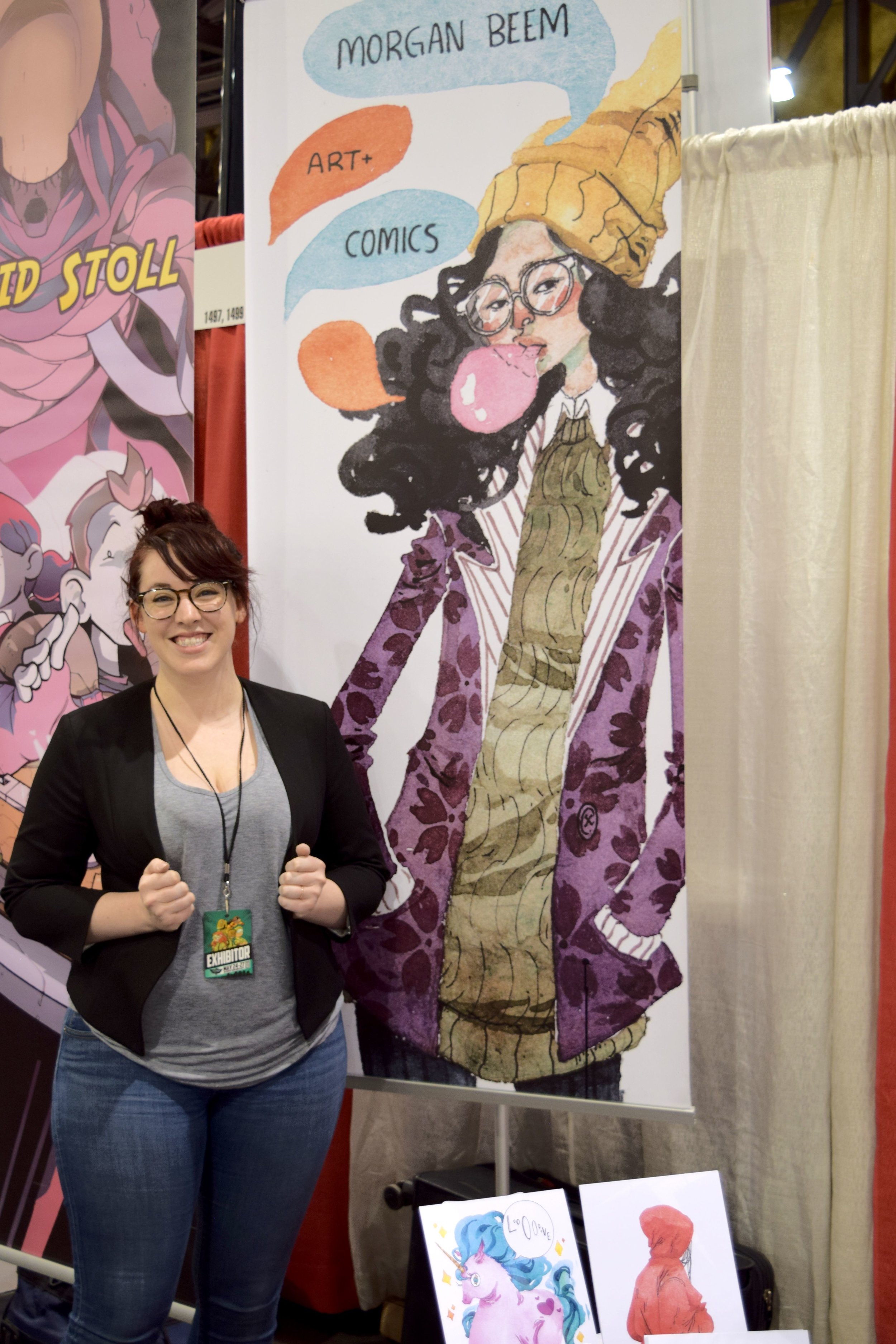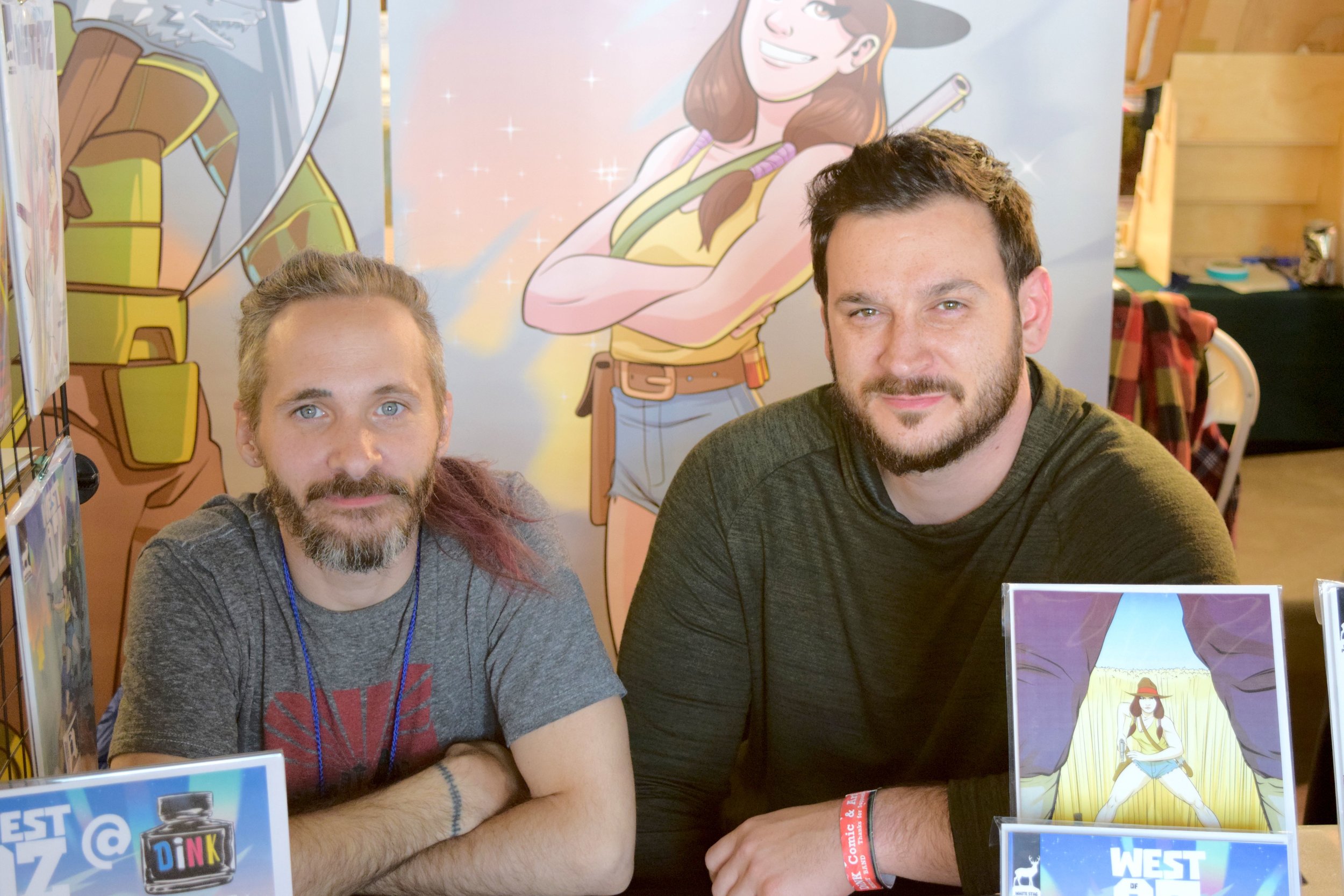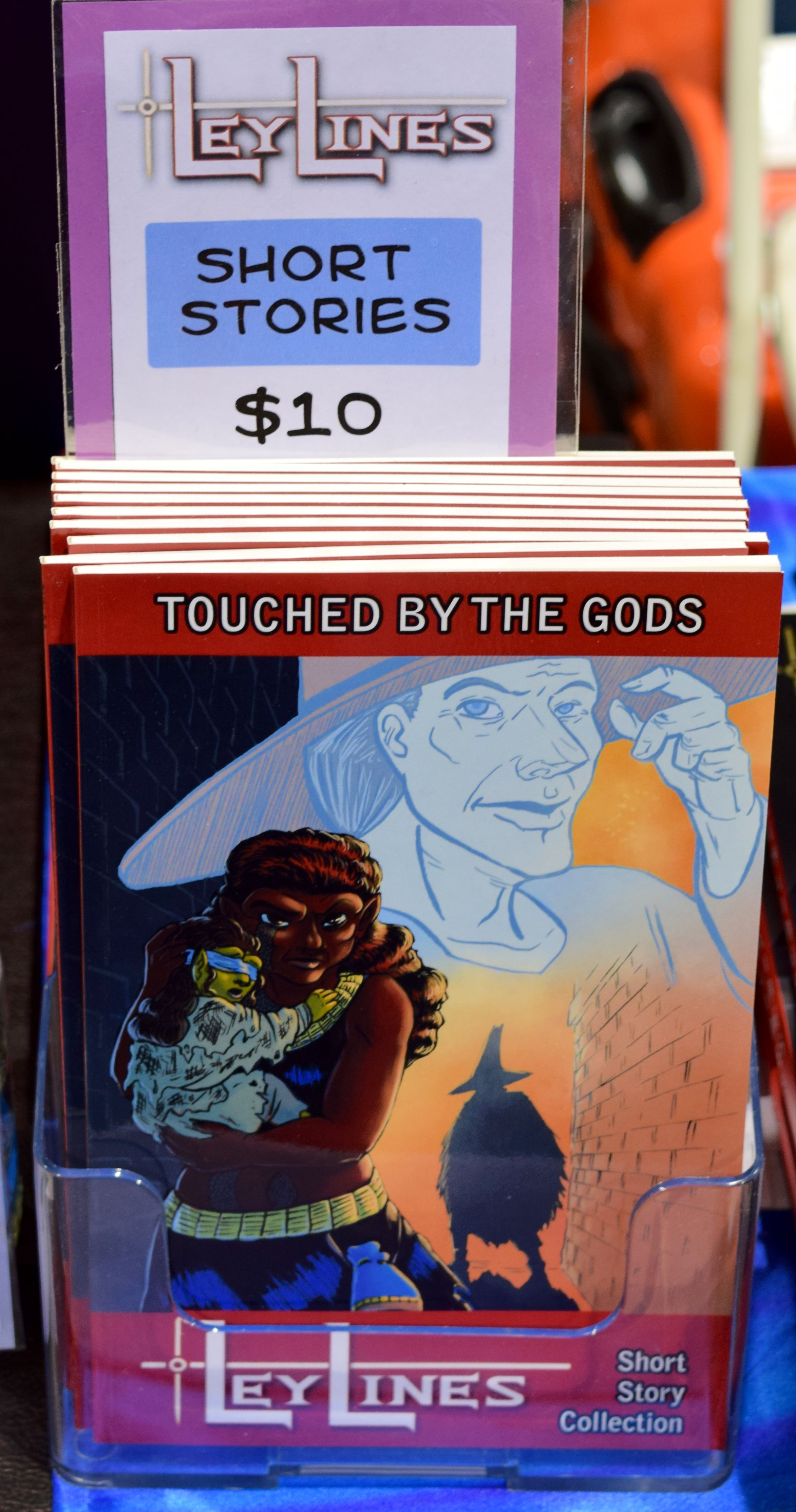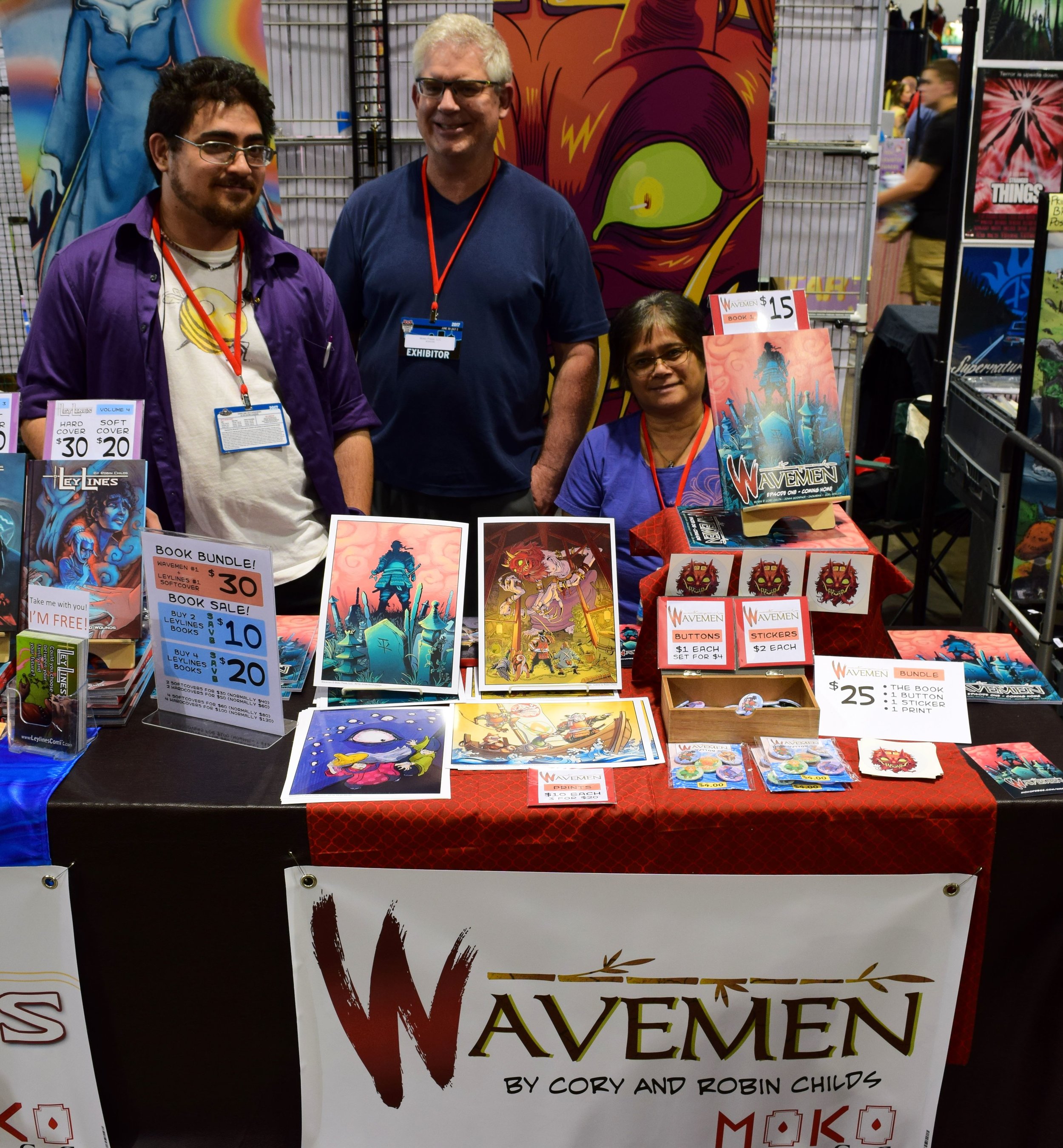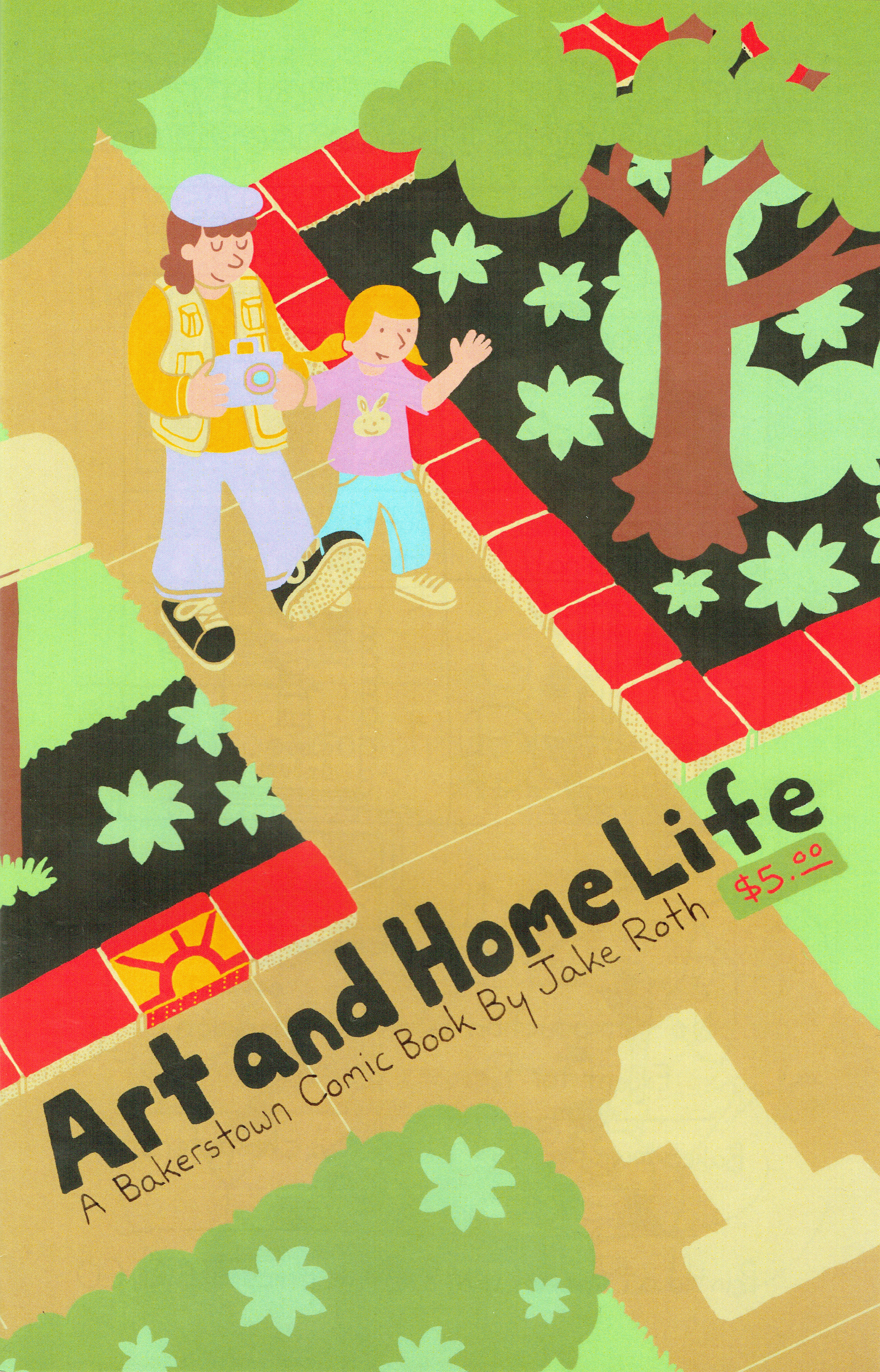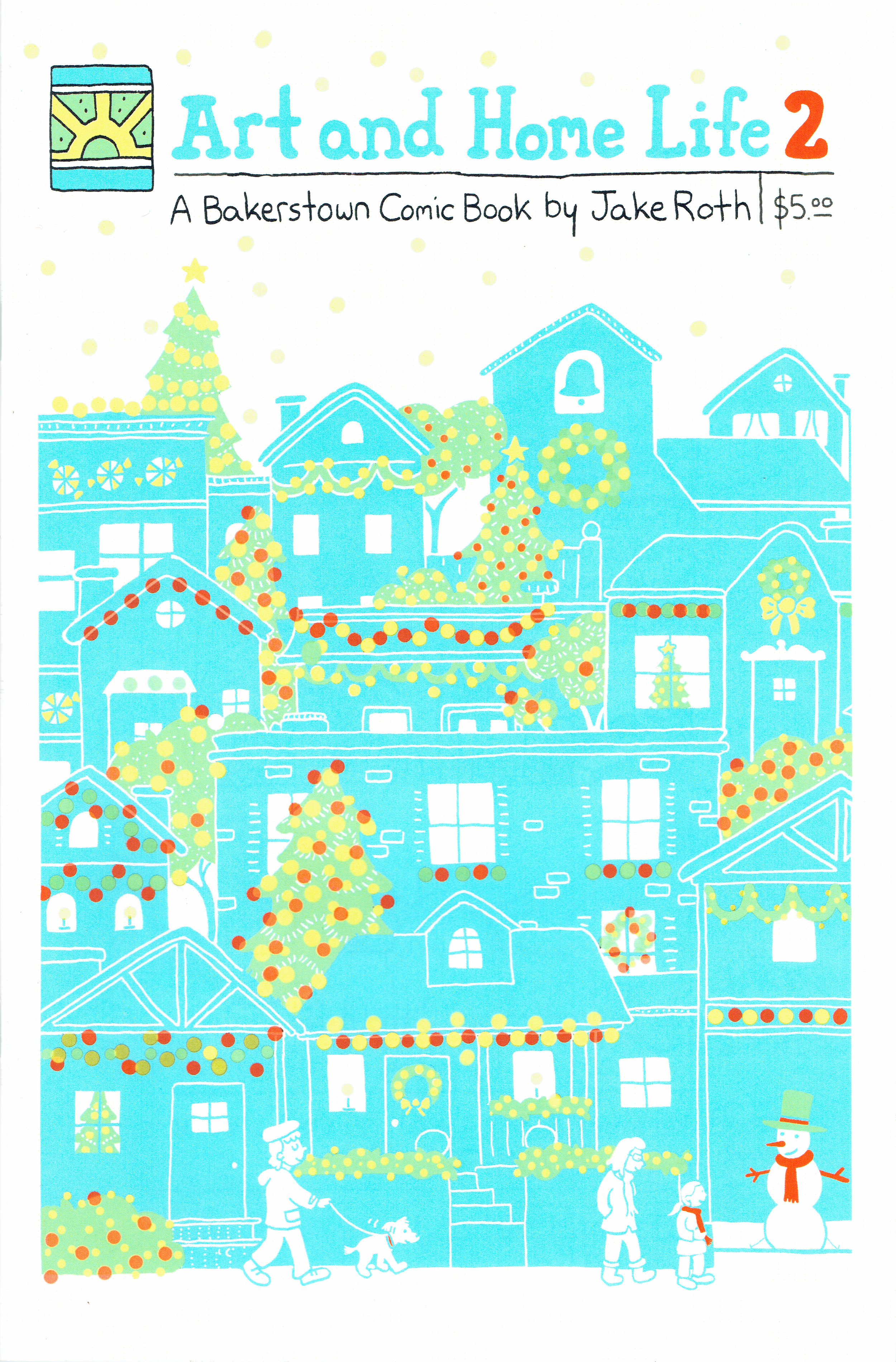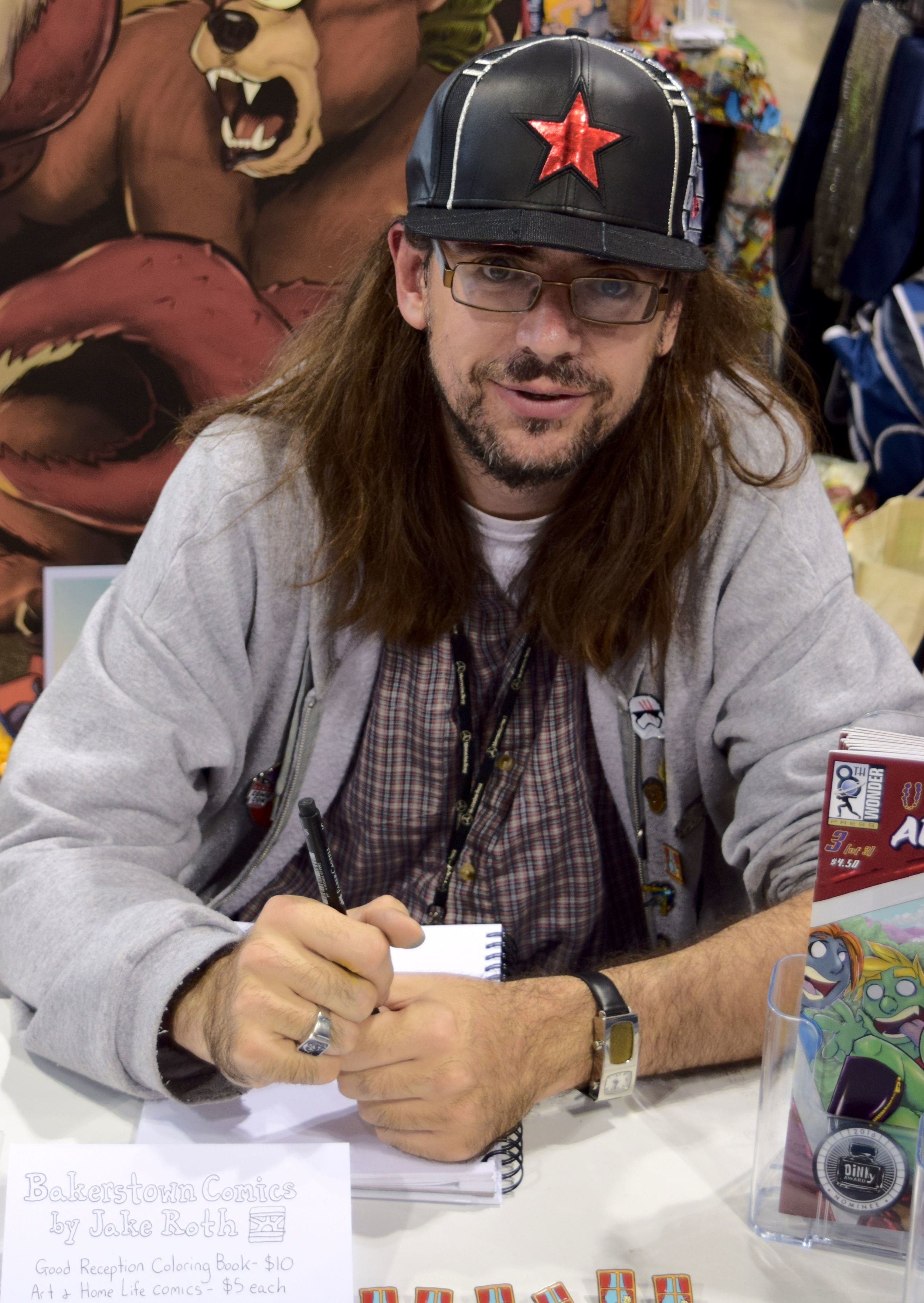Discovering the Ethereal In Comics - An Interview With Dustin Brunell
/Written by Neil Greenaway
Ethereal Comics Banner
In the short time since Ethereal Comics has joined the throng of independent publishers on the market these days, the company has already distinguished itself with a line of varied and distinct titles. My own first exposure to the company was through their recent KickStarter campaign for the new book "If It Hops" - a story about anthropomorphic animal police in a world of surprisingly adult themes and consequences. Intrigued by what else the company might offer, I spoke to Dustin Brunell - publisher of (and often author for) Ethereal Comics.
An If It Hops sticker.
Nerd Team 30: How long has Ethereal been around?
Dustin Brunell: Ethereal Comics as a company was formed last year around Christmas. We published with a couple of friends before then that were kind enough to help us before we got our feet on solid ground.
NT30: So fairly new. Cool. Why did you start Ethereal? (And is it you alone running things)?
DB: I started Ethereal because I wanted a home and a legitimate company for all the talent we work with. It is me with my wife and Blayden Hunter, plus 35 talented folks.
NT30: That is a huge stable to be working with so quickly. Does it feel like the company is growing already, or do you still feel like you are finding your footing? Did you have comics experience before hand?
DB: Lots of folks to be sure, all tremendous people. I feel like year one was finding our footing, now it's all about growth. I owned a comic shop for a couple of years in Florida, been buying and selling since I was knee high. By the end of this year, we should have nine ongoing titles.
The Listener cover from Ethereal Comics.
NT30: Excellent! What was your first published title?
DB: We published The Listener issue 1 October 2020.
NT30: What was the first comic that you wrote?
DB: The Listener. I had never intended to write in all honesty. I was a big fan of writing Werewolf the Apocalypse campaigns and D&D games for folks. When we moved to TN my uncle died and I wrote a eulogy. Friends of ours in the industry said I should write comics. That pushed me in the "write" direction if you will. The Listener is loosely based on my uncle’s stories he would tell us. Spiced with theology and horror.
NT30: Is The Listener going to be an ongoing series?
DB: It's an ongoing title, we just finished up the preorders for issue #4 and the trade paperback for the first arc. Currently I have 28 issues written for it and will continue with it as long as the fans are interested.
NT30: Wow. Is the entire run connected to your uncle's stories? Or do you have to take it in its own direction as the series goes on?
DB: His stories are spiced throughout the series. His time in the service, stories about things he dealt with as a Native American, his beliefs in spirits. All of these things are tied heavily in.
NT30: Do you feel like his storytelling affected your own style?
DB: I don't think so, I think it was more of a push for me. All of our series are very different. I don't know if you could classify my writing style. At least I can't, I wouldn't know what to call it or how to explain it for that matter. I just go with the flow if that makes any sense.
NT30: You have a KickStarter campaign running for a new title right now, correct?
If It Hops #1 cover from Ethereal Comics.
DB: Yes. Currently If It Hops is running with a preview for Theater 7. Then the KickStarter for Greed #3 will start up in 2-3 weeks.
NT30: Can you give a brief pitch on If It Hops & Theatre 7?
DB: Absolutely, If It Hops is like an amalgamation of beauty and terror, wrapped in an anthropomorphic bow. Like if you made a smoothie with Zootopia and Seven. It follows Agent C as she chases a serial killer through the streets of Eden, and as she traverses further into the dark she begins to learn - all is not as it seems.
Theatre 7 is our first comedy, a tribute to the 90's with Cavewoman artist Devon Massey helming the art. Penny is a college student and avid movie enthusiast who gets a job at a newly renovated theatre. What she doesn't know is the Theatre has plans of its own for her. Think Quantum Leap meets Last Action Hero.
NT30: And can you tell us about what title is the next one in the pipeline?
DB: Greed #3 drops in a few weeks with a preview for Underland.
Greed is in the same world as The Listener but in modern day. It's about a young boy and his monster under the bed. Said monster has secrets of his own and inadvertently draws our young protagonist into a war between gods and monsters.
Underland is about a young engineer who gets drawn into a steam punk sort of world, and she is expected to save it - but all she wants to do is get home. It's a wonderful take on a story that's been around for ages. After that we're back to Babes, Gore and Dinosaurs with issue #3.
Babes, Gore and Dinosaurs cover from Ethereal Comics.
NT30: Have all of your issues run through KickStarter so far?
DB: Yep. We fund them first, which means all of our books are done or almost done by the end of the KickStarter. Our turnaround is generally 4-6 weeks from the end of the campaign. It's about the same time as ordering from Diamond.
NT30: As an independent publisher, does it feel like getting into Diamond Distribution still matters? Or does crowdfunding directly from the fans feel like the way forward?
DB: I wanted to get into Diamond and they were going to put BGD in but we couldn't agree on prices. Then I spoke to a few brick-and-mortars about things and it seems like cutting out the distribution middle man in favor of fans and shops is the way to go. For us anyway.
NT30: I've heard similar stories from other small publishers.
DB: Our books are already lower than a lot of indies - especially for the quality you're receiving. Going any lower and I couldn't afford the talent we use. I mean we don't just use anyone; we have team members who work at Marvel, DC, Zenescope, Image and Disney. I can't ask them to work for pennies.
NT30: I think that’s great. An awful lot of small publishers exist solely because of the low-to-nonexistent rate that their talent receives.
DB: It's like anything else though, ya know? You pay for what you get. If I'm going to stick out and people are going to know who we are we have to bring 110% to every aspect of what we do.
NT30: What titles have you published so far for Ethereal?
Greed #2 cover from Ethereal Comics.
DB: There are five that have already been released. The Listener/ Greed/ Babes, Gore and Dinosaurs/ If It Hops/ Theater 7. Then we've got Underland/ Fallen Leaves/ and a third book in development. Plus, our Australian company and our After Dark labels.
NT30: Do you have a team in Australia? What is After Dark?
DB: We'll be releasing different series from Ethereal Down Under and Ethereal After Dark later this year. Both with their own teams. Ethereal Down Under will be books we publish in Australia with Australian talent. The management team is already building that up now. Readers should look for the first book at the end of the year or the first quarter of next.
Then Ethereal After Dark is our mature publishing label which already has two books ready to release, we just haven't set dates yet.
NT30: That all sounds seriously ambitious!
DB: It's a lot of work but this is my full-time job, so it's no different than any other. Plus, our teams are amazing.
NT30: It sounds like you have a lot on your plate with several interesting new books coming out. Before we wrap up here, is there anything else that you would want readers to know about Ethereal?
DB: I would stress that we always give every issue everything we've got. And from one comic reader to another, it's always an adventure jumping into an Ethereal book. We grow with each issue and we want our readers to grow with us.
NT30: If our readers wanted to see more work from Ethereal, where would they look?
DB: Head over to WWW.Ethereal-Comics.com. That has everything on it, Instagram etc. I appreciate the interview, it was fun.
Greed #1 cover from Ethereal Comics.
Theatre 7 cover from Ethereal Comics.
Cover art from Ethereal Comics.




